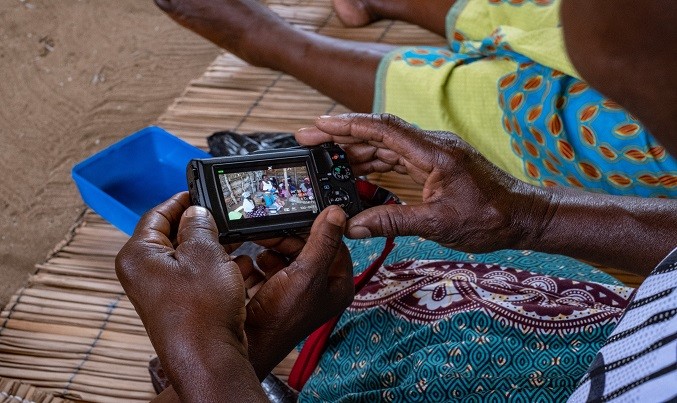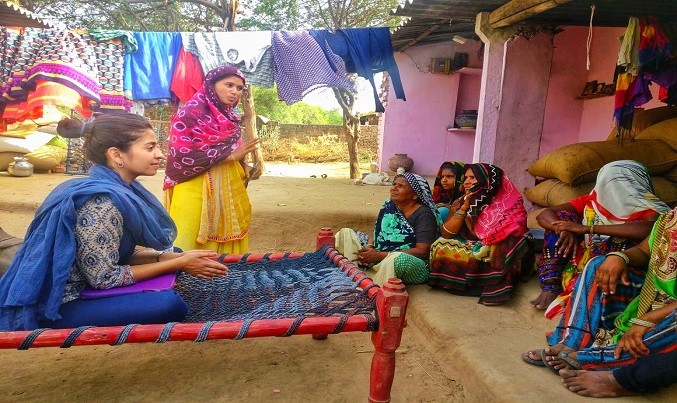Photographer Jason Houston makes a case for a modified version of participatory photography, one which breaks the creator-audience barrier and helps understand social and environmental issues facing a community.
The media landscape has changed, a lot, and many times throughout my career as a photographer. I’ve seen it go from being a specialized and niche skill; to driven by the accelerated learning (albeit with expense) made possible by digital; to the endless stream of images on phones and social media feeds that is mainstreaming both the creation and consumption of visual information. Photography is no longer the exclusive domain of the professional, but has become a common language and democratizing tool of its own that can offer intimate insight into others’ lives, transcending preconceived assumptions on values and behaviors and even traditional language barriers.
For the concerned photographer—those of us who intentionally use photography to inspire awareness, engagement, and change in the world—this evolution of accessibility and visual literacy presents many opportunities, including some that no longer involve us making our own photographs.
One of these opportunities I have been experimenting with is a collaborative form of participatory photography that focuses not on making photographs, but on how photographs can be used to deeply understand the social and environmental issues affecting a community.
Traditional participatory photography is focused on teaching photography and empowering the individuals who participate in the program. This has value, especially for the participants, who become representatives for the issues and ambassadors for change in their communities. But it is also still exclusive and sets up the hierarchy of creator vs. audience. Other voices in the community are discounted, compartmentalized, or left out.
In this modified approach, I am not concerned with participants becoming photographers, but on deepening and expanding the impact of socio-environmental work by using the power that photography and the photographic process has for anyone—and everyone—to engage in conversations about what matters most to them. By recognizing the increasingly social ways people now use photography, and by adding community-wide discussions, non-hierarchical meetings, and public exhibition and other photography-focused events, we can use photography in a variety of ways: allowing those who participate to explore and share their own lives, building trust, and engaging more people in conversations addressing common concerns. Depending on how one designs the projects, there are also opportunities for those working on these issues to build programs based on a more nuanced understanding of the community’s needs.
I have had the opportunity to do several different pilot projects, including one with The Nature Conservancy, focused on traditional participatory photography combined with communications skills development with youth in the First Nations community of Klemtu on the pacific coast of Canada, and one with Rare and fishermen in the small coastal village of Závora in southern Mozambique as part of a larger user-centered design process. In each case, we focused less on technique or creativity in the photography, and more on understanding the different ways photography is and could be used in the community. This also lessens the burden on the participatory project organizers to supply equipment or to have professional-level photographic knowledge. That said, each situation also widely varied in their existing capacity to pull off the project. The youth in Klemtu were technological savvy, familiar with photographers who often visited to photograph the wildlife, and the community actively used Facebook. In contrast, many in the fishing community in Závora didn’t have regular electricity, cellular service with reliable data, or any effective way to download and share the images they made. As a result, Mozambique required more oversight and assistance to keep the community involved with the participants’ photography, whereas in Klemtu we were able to add elements ad hoc, such as a Facebook-hosted photo competition juried by the youth that became one more way to engage the whole community. Still, in both cases we added only what was necessary for the project, using their existing tools and habits rather than introduce new technology. By meeting each community where they were, we were able to quickly move beyond logistics and processes, and focus on the goal of using their photography as a catalyst for more meaningful conversations.
Results from cause-driven communications efforts, like any marketing effort, are usually subtle and anecdotal by nature. But additive incremental changes in behavior and shifts in values are what will ultimately lead to sustainable change in social and environmental issues.
Klemtu was a community deeply rooted in its rich cultural history, but also at times struggling with poverty, depression, and addiction. After one of the open meetings where the youth presented their work, I was forwarded a Facebook post that read: “Went to an awesome photo art exhibit…I put down the [gaming] controller and enjoyed part of my heritage for a change :)”. In Závora one of the participants, a fisherman, photographed a large grouper in the back of a truck. In addition to fishing, dive tourism is important for this community, and fish like groupers are key attractions for divers. When he shared this photograph at a community meeting it led to a lively and sometimes heated discussion about the need for better regulations. Some photographs don’t directly address the main issues, but serve to add useful complexity to the conversations.
I believe in photography and its unique power to inspire change. And there are times when we need the professional photographer as an interpreter to contextualize and amplify the stories of those otherwise without a voice. Today, we are all interconnected in myriad ways, and we communicate more than ever before. Breaking down the barriers between photographer and subject, and listening to, learning from, and collaborating with each other can help make photography an even more powerful tool.











